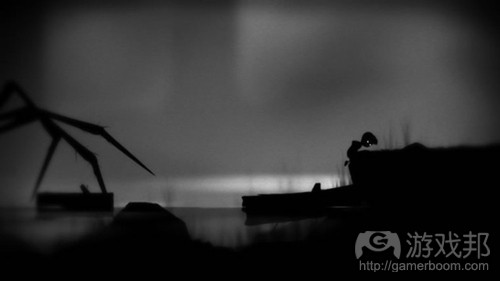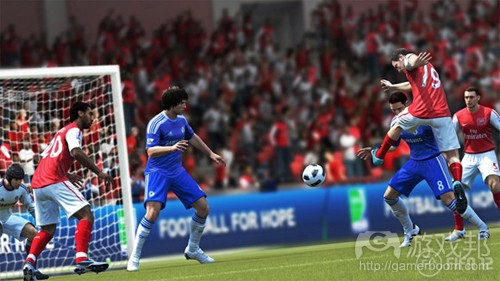关于游戏音频制作和整合的10个技巧
作者:Tristan Donovan
音效对任何游戏都至关重要,但是专注于哪些方面才能让你到达电子游戏媒介的巅峰呢?Gamasutra采访了多个音频总监,他们分享了10个音效建议和想法。
1、专注于关键的音效
THQ旗下工作室Volition的音频总监Ariel Gross说道:“在《黑道圣徒3》开发期间,我们时常提出‘这个音效对玩家是否有意义?’这样的问题。”
“有些音效只需要添加并恰当呈现即可。如果你击中一个垃圾桶,那么就需要播放类似于垃圾桶的音效,但这种音效对玩家是否有意义呢?通常情况下并没有什么意义。它们只是需要存在于游戏中。所以,我们花在这处对象冲击音效上的声音要少于在任务重要时刻中的独特音效。”
“我们必须不断询问自己‘这个音效有多重要?’和‘玩家是否会在意这段音效?’如果确实是玩家可能在意的音效,我们便会投入时间、金钱和资源,但是如果答案是‘这并不十分重要’,那么我们便会花较少的时间来设计这些音效。”
2、模糊化音效和音乐间的界限
在为Playdead的《Limbo》制作音频时,Martin Stig Andersen使用了电声作曲。他说道:“我有电声作曲的背景,在这种方法中,并非编写管弦乐曲谱,而是记录音效,然后将音效拼接成音乐。为实现目标,我使用了与音效设计师相同的工具,但是我认为自己的做法更贴近于音乐和作曲。”
他说道,《Limbo》中小男孩靠近蜘蛛的时刻便是这种方法有效的绝妙例证。“我没有采用添加传统音乐的方法,而是使用来自环境的音效来营造出相同的效果。所以,当你靠近蜘蛛时,风声依然会存在,因为这种音效产生的紧张感不亚于小提琴之类的乐器。但是,我在游戏中没有使用抽象的管弦乐音效,而是利用来自游戏空间的音效。”
3、成为出色的管家
EA旗下《FIFA》系列游戏音频总监Jeff MacPherson说道:“维护音效库并不是件有趣的工作,但却是最重要的工作之一,如果做不好可能会出现最糟糕的情况。”
“我在与他人合作或雇佣员工时,最看重的就是良好的管理技能。如果你不会管理有着5万个范例的数据库,那么你可能在今后的工作中犯错误,导致很严重的事情发生。有些未经许可的东西被添加到游戏中,于是你会被起诉。或者,如果将脏话等不良内容添加到游戏中,会导致作品的评分很低。”
“你还可能丢失内容或没有添加合适的内容。我们花了大量资金来获得不同的音频内容,所以如果你无法恰当地管理数据库和备份系统,你就会陷入麻烦之中。”
4、大世界需要小音效
与其他类型游戏相比,开放世界游戏更依赖于流动音效,所以Volition的Gross认为控制音频文件大小很重要。
他说道:“如果玩家正在驾驶汽车,那么环境就处在流动中,我们必须确保游戏中的音效与现实世界相似。所以,我们将音效文件制作得尽可能小一些。”
但是,尽早感受和测试音频也很重要。他说道:“你需要尽早使用DVD模拟器在PS3上感受音频的效果,而不是等到其被运用到游戏中。”
“在制作《黑道圣徒3》时,我们随后惊恐地发现,当我们开始在DVD模拟和蓝光上播放时,多数音效无法正常播放。我们不得不回头对所有的音效进行优化处理,对其进行进一步压缩。这个过程对团队来说简直是噩梦。”
5、音效应当服务于游戏设计
PopCap采用的方法是,让音效为游戏设计提供支持,公司音频总监Guy Whitmore如是说。他说道:“音效的作用是向玩家传达对游戏过程至关重要的内容。”
PopCap音频制作人Becky Allen说道,公司近期发布的Facebook游戏《Solitaire Blitz》中的音乐便是例证。“在游戏中,玩家共拿到10张牌。当玩家一次性出7张牌时,游戏就会播放钟琴声。出第8张牌时,又会播放不同的音乐,第9张牌的音乐也有所不同,这种音乐设计与游戏设计相配合。这种进展性的声调告知玩家他们朝着正确的方向发展。”
6、探索音效心理学
自由音效设计师Alistair Lindsay说道,我们听到的不只是音效产品,还是我们的思维状态。他提出问题:“你或许在游戏中见到过大爆炸,但它们是否反映出你作为参战士兵的感觉?”
“我曾经同参加过战争的士兵交谈过,有人说你的同伴在你附近开火,声音听起来就像他与你相隔200码,但是对于那些向你开火的人,你会觉得他就在你身边。音效不是简单的层叠,它会受人类感知的影响。”
Lindsay希望能够利用人类的感知来强化自己的作品。在《Prison Architect》中,游戏在凶杀案的过场动画中恰当地呈现了手枪的音效。
他说道:“在随后的过场动画中,我们使用了同样的音效,是为了让玩家回想起之前的那样情感状态。”
7、让同行评论正在设计中的音效
Gross说道:“我们在Volition提倡同辈评论。我们在设计音效时,完成前我们会让所有参与者发表看法。在你的工作期间,可以将半成品呈现给同样从事音频行业的人,让他们发表看法,这样我们就可以在真正将其执行到游戏中之前加以润色。”
“所以,在音效被运用到游戏中之前,我们已经重复改良了2到3遍。营造可在开发过程中安全分享音效的环境,这确实帮了我们很大的忙,因为我们知道重复制作的时间并不多。”
8、展开PR活动
EA的MacPherson说道:“音频处在竞争激烈的领域,所以我们需要通过PR活动来获得资源。”
“传播音频重要性对游戏和行业来说很重要,因为它不像图像或游戏玩法那样有形。对于图像来说,你可以在任意时间暂停,任何人都可以寻找其中是否存在瑕疵,但是音效并非如此。除非你特意指出,否则人们很可能遗忘音效部分。他们只会注意到音频的不良状况。”
为获得支持,《FIFA》的音频团队使用AV对比来展示音频的重要性,解释在音频中投入更多资源能够改善用户的游戏体验。
9、不遵从逻辑
Playdead的Andersen说道:“在游戏中,人们往往采取更富逻辑性的方法,比如某个对象在这个地方,那么它就应当发出这种音效。这就像机器一般:你向对象添加音效,然后它们将其融合。”
“我更偏爱主观融合。我融合了部分总是能够取悦玩家的音效,只要对象对玩家不再重要,我就会将其删除。我发现,让《Limbo》中的男孩时刻处在音效伴奏中很重要,即便他从屏幕的中心移出。我觉得这有很重要的意义,因为玩家在《地狱边缘》中扮演的就是这个男孩,所以音效应当跟随男孩而不是环境。”
10、参与到开发过程中
Volition的Gross认为,音频团队需要尽早融入到开发过程中。他说道:“许多人认为大量音频工作都是在项目末期开展,所以我们只需要在项目末期融入开发进程即可。但是,如果我们从项目一开始就进入,我们就可以为其他人的潜在计划提供帮助,有时可以修改这些计划。”
音频不仅要融入开发,还要有开放性。Gross说道:“人们可能不喜欢同音频制作者交谈,因为他们不了解我们使用的术语,这是毫无必要的顾忌。我们不能再独立工作,需要参与到整个计划中。我们需要同其他团队成员交谈,邀请他们进入我们的工作室。我们也需要走出工作室,进入他们的工作区域内。我们需要告诉人们,我们是团队的一份子,我们能够为你们的作品赋予听觉上的享受。”(本文为游戏邦/gamerboom.com编译,拒绝任何不保留版权的转载,如需转载请联系:游戏邦)
10 Tips: The Creation and Integration of Audio
Tristan Donovan
Sound is crucial to any game, but what do you really have to concentrate on to reach the heights of the video game medium? Gamasutra caught up with audio directors to pick their brains for 10 juicy morsels of sound advice and ideas.
1. Focus on Sounds That Matter
“One of our mantras during the development of Saints Row: The Third was ‘is this sound going to be meaningful to the player?’,” says Ariel Gross, audio director at the THQ-owned studio Volition.
“Some sounds just need to be there and sound right. If you hit a dumpster, then it needs to sound close to a dumpster, but is that sound meaningful to the player? Usually not. They just need to be there. So we spent less time on object impact sounds than the unique sounds for the big moments in the missions.”
“We had to keep asking ourselves ‘How important is this sound?’ and ‘Would the player care?’ If they did, we would put our time, money and resources towards that sound, but if the answer was ‘Well, yeah, it’s kinda important’ or ‘Not really’, then we would spend a lot less time designing those sounds.”
2. Blur the Boundary Between Sound Effects and Music
Martin Stig Andersen drew on the concept of electroacoustic composition when creating the audio for Playdead’s Limbo. “My background is in electroacoustic composition, where instead of writing scores for orchestras you record sounds and then make a sound montage or collage that would become a piece of music,” he says. “To do this I use the same tools as sound designers but I think of my work in a more musical, compositional way.”
The moment in Limbo when the boy nears the spider is a good example of how this works, he says. “Instead of putting in traditional music, I used sounds from the environment to create the same effect. So when you approach the spider, the wind sounds stand still, because that gives a tense feeling equal in suspense to using an instrument like a violin. But instead of having this abstract orchestra sound dropped in, I work with the sounds from the actual game space.”
3. Be a Good Housekeeper
“Maintaining your library of sounds is not the sexy part of the job but it is one of the most important, and it’s one of the places where you can fall down the worst,” says Jeff MacPherson, the audio director of EA’s FIFA games.
“When I work with or hire people, one of the things I value most is good housekeeping skills. If you cannot manage a database of 50,000 samples, you may make a mistake that could result in a lot of bad things happening. Something that is not licensed could make it into the game, so you could get sued, or bad content like swearwords get in, and you get into trouble with the ratings board.”
“You could also lose stuff or not put the right stuff in. We’re paying a lot of money to get a lot of different audio content, and so if you don’t manage it properly in the databases and backup systems, you could get into trouble, and there’s really no excuse.”
4. Big Worlds Need Small Sounds
Open world games rely on streaming sounds more than most titles, so keeping audio file sizes down is important, says Volition’s Gross.
“If the player is driving a car so the environment’s streaming, and we try to call a sound because he starts shooting out of the window at 100 mph, we have to make sure those sounds get streamed off the disc at the same time as the world,” he says. “So we make our sounds as small as possible.”
But profiling the audio early is critical. “You need to profile constantly and as early as possible using DVD emulation on the 360 and actual Blu-ray disc on the PS3, rather than an installed copy of the game,” he says.
“With Saints Row: The Third we found out frighteningly late that when we started playing on DVD emulation and Blu-rays that most of our sounds weren’t even playing. We had to go back and optimize all our sounds, get rid of extra variations, and compress them further. It was a nightmare.”
5. Sounds Should Serve Game Design
PopCap’s sonic approach is to have sound effects that support the game’s design, says the company’s audio director Guy Whitmore. “The sound is always communicating something specific to the player that’s very important to how you play the game,” he says.
One example is how musical notes are used to signal progress in its recent Facebook game Solitaire Blitz, says PopCap’s audio producer Becky Allen. “In the game multipliers are given for 10-card runs. When the player plays the seventh card in a row without interruption, a note on the glockenspiel is played. A different note is then played on the eighth card, then another different note on the ninth, creating a small three-note melody that plays well with the music. This progression of glockenspiel tones informs the player that they are progressing and on the right path.”
6. Explore the Psychology of Sound
What we hear is not just a product of sound waves, but also of our state of mind, says freelance sound designer Alistair Lindsay, whose credits include Kinectimals and Defcon. “You might have big explosions for your game, but do they reflect how you would feel if you were a solider in the battlefield?” he asks.
“I’ve spoken to soldiers who’ve been in combat, and one guy said that your buddy can be right next to you firing his weapon, and it sounds like it’s 200 yards away — whereas the guy shooting at you sounds like he’s right next to your head. Sound doesn’t necessarily run on railroad tracks; it’s not two plus two, it’s two plus two plus perception.”
Lindsay is hoping to take advantage of people’s sonic perceptions with his work on Introversion’s forthcoming jail boss sim Prison Architect. One simple example from that game is having the sound of a pistol being cocked will be played at a key moment in a cutscene involving a gruesome murder.
“That same sound effect is then used out of context in a later cutscene, the idea being that the dissonance between what the eye sees and the ear hears at that moment might re-trigger any emotion felt during the first gruesome scene. That idea has its root in neurolinguistic programming techniques,” he says.
7. Peer Review Unfinished Sounds
“Something that we advocate at Volition is peer review,” says Gross. “We involve each other while we are designing sounds, before they are done. Showing your work when you’re halfway through it is something that audio people can find challenging or frustrating, but this is a way that we can gradually talk about the sounds before we actually implement them in the game.
“So by the time they go in we’ve already had gone over them two or three times. By creating an environment where it is safe to share your sounds while they’re in progress really helped us nail it before implementation because we knew there wasn’t a lot of time to iterate.”
8. Mount a PR Campaign
“Audio is one of the areas with the biggest disc footprint, and there are a lot of people vying for resources — whether that’s the CPU, RAM or disc footprint and rightly so it does become a bit of PR campaign to get those resources,” says EA’s MacPherson.
“It’s important to evangelize upwards the importance of audio, because it’s not as tangible a discipline as graphics or gameplay. With graphics you can pause a picture, and anybody can look and see if something’s wrong immediately, but it’s not the same for sound. Unless you point something out specifically, people maybe think it’s because the graphics or gameplay is better. They only really notice audio when it’s not good.”
To help win support, FIFA’s audio team uses AV comparisons where they show footage from the game with poor or limited audio and then explain or show how giving more resources to audio could improve the experience.
9. Defy Logic
“In games people often go for the more logic-based approach, where if an object is in this place then it should make this sound. It’s like a machine: you put sounds on objects and then they just mix themselves,” says Playdead’s Andersen.
“I am much more into a subjective mix. I mix it so that you always hear what you are approaching, and as soon as the objects are no longer important to the player, I get rid of them. I found it important to have the boy in Limbo at the center of sound perspective at all times, even if he moves away from the center of the screen. I think it makes perfect sense, because the player takes on the role of the boy in Limbo, so the sound follows the boy, not the environment.”
10. Get Included and be Inclusive
Audio teams need to get involved earlier in the development process, says Volition’s Gross. “There’s a perception that because a lot of the audio work comes at the end that we don’t need to be involved until the end,” he says. “But by being involved from the very beginning, we can expose hidden work in other people’s plans and sometimes change these plans.”
It’s not just about audio muscling in; it’s also about audio opening up. “People can be a little intimidated talking to audio people because they don’t know the language that we use, but they don’t need to,” says Gross. “We need to stop thinking of ourselves as separate and get involved in the planning. We need to talk to people, invite them into our offices, and just get this rapport going. A lot of it is on us in audio to go out and insert ourselves. We need to say to people that we are part of the team, and we’re going to make your stuff sound amazing.” (Source: Gamasutra)
下一篇:论述杰出游戏作品的9大必要元素










































 闽公网安备35020302001549号
闽公网安备35020302001549号